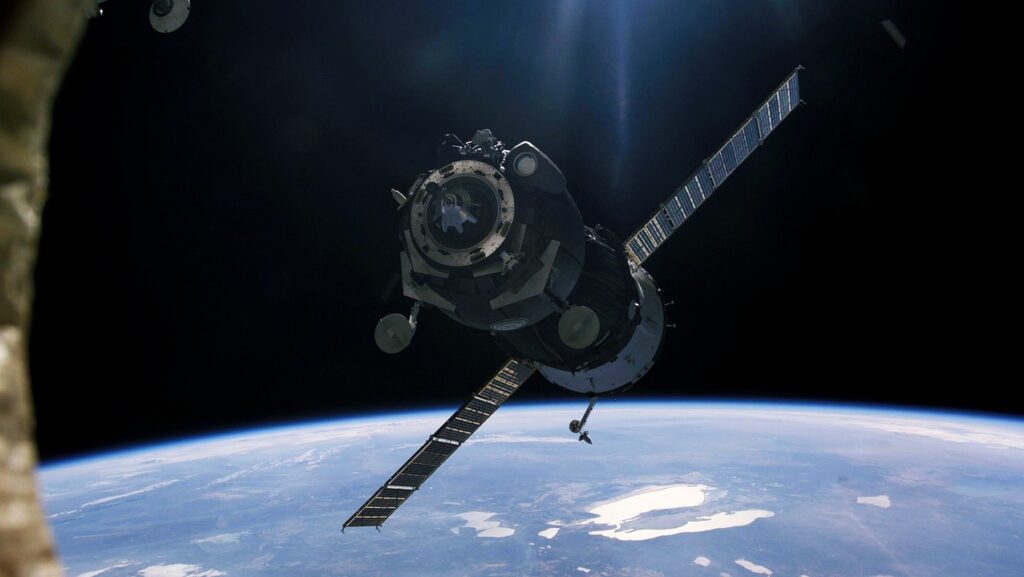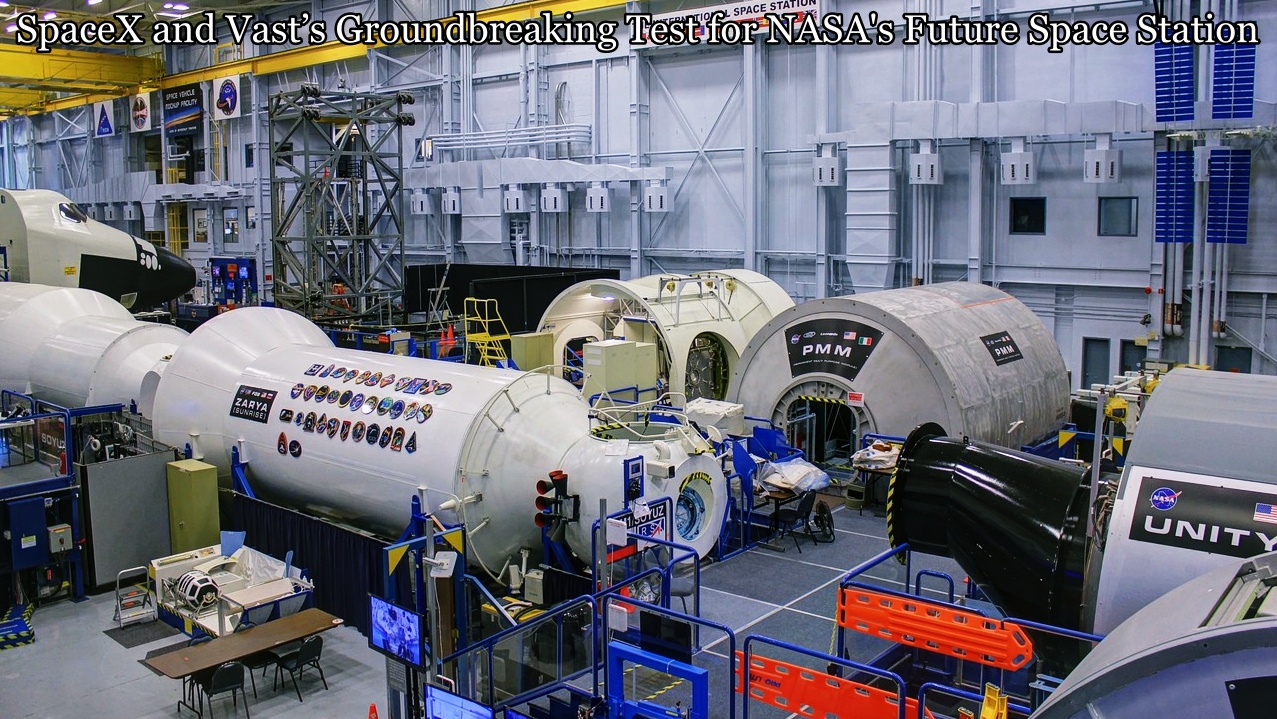We are on the brink of an exciting era where humans will soon live and work in a true home among the stars. A key project leading the way is NASA’s previously overlooked Vast Space Station, which is now making significant strides with powerful backing from SpaceX. The project’s schedule is officially set, and it’s poised to become a major milestone in the future of the US Aerospace industry.
In this blog, we’ll dive into how this ambitious project is coming together and what it means for the future of space exploration.
The Need for a New Space Station
Building a new space station is one of the most critical tasks of this decade. First, it will serve as the successor to the International Space Station (ISS), which is set to retire in the coming years. Second, humanity needs advanced systems to enhance the efficiency of space exploration. This is the driving force behind the Vast Space Station as it joins the growing ranks of commercial space habitats.
The Early Struggles of Vast Space Station
Due to its relatively recent establishment and reputation not yet on par with the likes of Axiom Space, Blue Origin, Sierra Space, or Northrop Grumman, the Vast project was initially overlooked. However, against all odds, Vast is leading the race to become the first commercial space station to launch into orbit.

Vast’s Remarkable Milestones
In a major update published on February 6th, 2025, Vast announced a critical milestone: the Haven 1 module’s primary structure passed a crucial proof test on January 31st, 2025.
Key Achievements of the Test
During the test, Vast conducted a decay leak check followed by pressurizing the module to 1.3 Bar D (or 26 PSI). The results exceeded expectations, with no visual changes to the structure, and the leak rate remained well within specifications for over 10 minutes.
This success confirmed several key factors:
- Haven 1’s pressure vessel passed its full proof qualification.
- The entire space station structure was designed, built, and tested entirely in-house by Vast.
- The project is advancing at an unprecedented pace.
Why Does This Matter?
This rapid progress is setting new industry standards and pushing boundaries for space station development. In just 15 months, Vast has managed to complete such a rigorous test—a feat that would take most space organizations several years.
The Speed of Progress: Vast’s Rapid Development
Vast’s pace of development is truly groundbreaking. The Haven 1 module was officially announced in May 2023. At that time, Vast had fewer than 140 employees and no dedicated facilities. Today, the company boasts over 700 employees, nearly 200,000 square feet of operational space, and 16 acres dedicated to manufacturing, integration, and testing.
Production for Haven 1 began in November 2023, and in just seven months, the company managed to ramp up full-scale production.
What’s Next for Vast Space Station?
Vast’s ambitions don’t stop here. The company is focused on launching Haven 1 by May 2026, setting them ahead of all other commercial space station projects. Here’s the road map moving forward:
- July to December 2025: Integration and testing of onboard systems.
- January to March 2026: Vehicle integration testing.
- May 2026: Launch of the Haven 1 module.
- One month post-launch: First crew mission, transporting four astronauts aboard SpaceX’s Dragon spacecraft.
The Role of SpaceX in Vast’s Success
SpaceX is playing a crucial role in supporting Vast’s space station with their Dragon spacecraft and Starship.
SpaceX’s Contributions
- Launch Services: SpaceX’s Starship will be responsible for transporting the core module of the station to orbit.
- Spacecraft Operations: SpaceX’s Dragon spacecraft will maintain the Vast supply chain, ensuring cargo and crew are safely delivered.
- Starlink Integration: SpaceX’s Starlink technology will provide high-speed, low-latency communication for mission operations and astronaut communications.
The partnership between Vast and SpaceX is essential for the success of the Haven 1 module, and it is positioned to revolutionize commercial space stations.
Vast’s Future Goals and Industry Impact
Vast has its sights set on further expansion, including the development of the Haven 2 module. The Haven 2 will play a crucial role in creating the foundation for Vast’s next-generation space station. The module will be launched sequentially, docking in orbit, with the final station shape forming when Starship transports the core module above.
Vast is also planning to participate in NASA’s Commercial Low Earth Orbit (LEO) Destination Initiative, which aims to replace the ISS as a reliable commercial alternative.
A Competitive Edge in the Commercial Space Industry
Vast is rapidly setting itself apart from other players like Axium Space and Blue Origin. Its ability to develop, produce, and test a space station module within record time gives it a significant competitive edge in the space industry.
The rapid progress of Vast not only impacts the US aerospace industry but also ensures that the US maintains its presence in low Earth orbit (LEO) as the ISS nears the end of its life cycle.
Conclusion: A Game-Changer for the Space Industry
Vast’s development of the first commercial space station and its partnership with SpaceX have set the stage for an exciting future. If they meet their timelines, Vast will become the world’s first operational commercial space station company, setting a precedent for the industry.
Do you think Vast will achieve its ambitious goals? Let us know your thoughts in the comments below.
FAQ
The Vast Space Station is a commercial space station being developed by Vast, which is set to become the first privately operated space station in orbit. It aims to be a successor to the International Space Station (ISS), which is set to retire in the coming years.
The Vast Space Station is crucial as it will serve as the foundation for the future of commercial space habitats. It is designed to enhance space exploration and will be an alternative to the ISS in low Earth orbit (LEO).
A key milestone was the successful test of the Haven 1 module‘s primary structure on January 31, 2025, which confirmed that the pressure vessel passed its full proof qualification, a significant achievement for the project.
SpaceX is integral to the Vast Space Station’s success, providing launch services through Starship, transporting the station’s core module to orbit. They also supply cargo and crew with their Dragon spacecraft and will integrate Starlink technology for communication.
The Haven 1 module is scheduled to launch in May 2026, with the first crew mission to follow approximately one month after the launch, carrying astronauts aboard SpaceX’s Dragon spacecraft.
July to December 2025: Integration and testing of onboard systems.
January to March 2026: Vehicle integration testing.
May 2026: Launch of Haven 1.
June 2026: First crew mission.
Initially, Vast was overlooked due to its relatively new status and smaller scale compared to larger players like Blue Origin and Axium Space. However, the company has rapidly caught up, overcoming these challenges and leading the race to launch the first commercial space station.
The Haven 1 module is the first part of the Vast Space Station, designed to support astronauts in space. It underwent rigorous testing, including a decay leak check and pressurization test, which confirmed its structural integrity.
Vast plans to develop the Haven 2 module, which will play a key role in the next-generation space station. This module will be launched sequentially, and the final station will take shape when Starship transports the core module into orbit.
Vast’s progress will help maintain the US presence in low Earth orbit (LEO) as the ISS reaches the end of its lifecycle. Additionally, it will set a new precedent for commercial space stations, positioning the company as a major player in the space industry.
Read More:


1 thought on “SpaceX and Vast’s Groundbreaking Test for NASA’s Future Space Station”